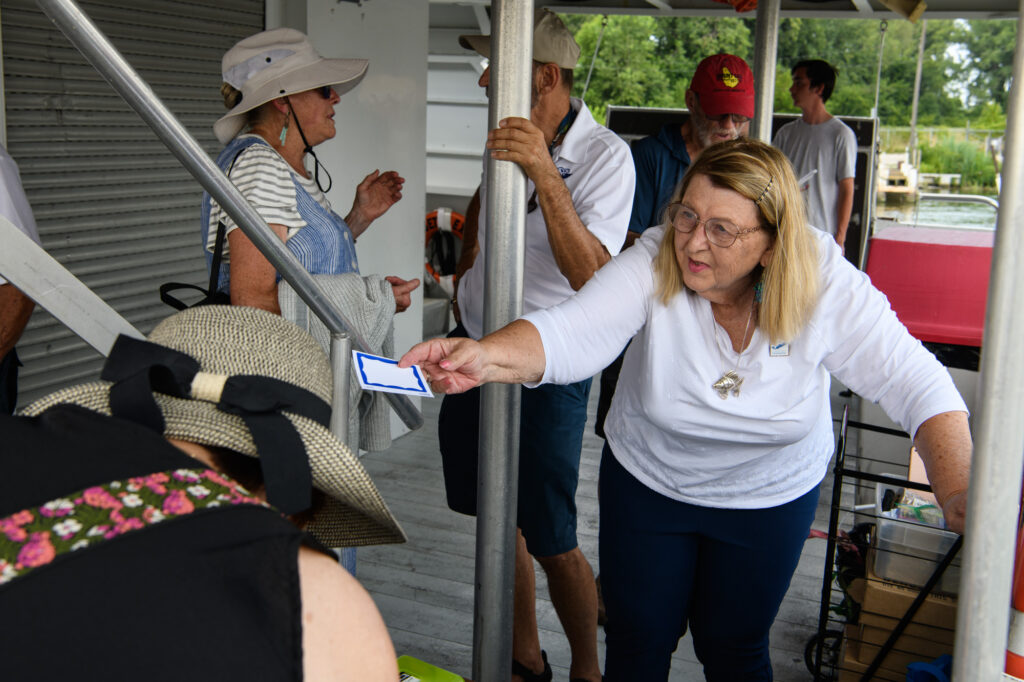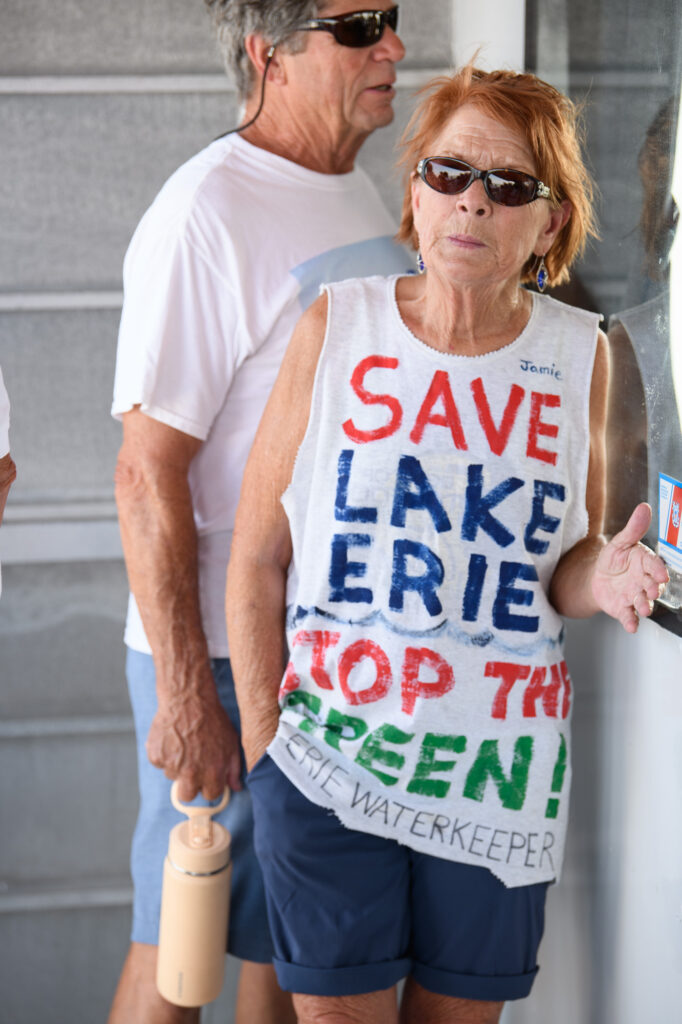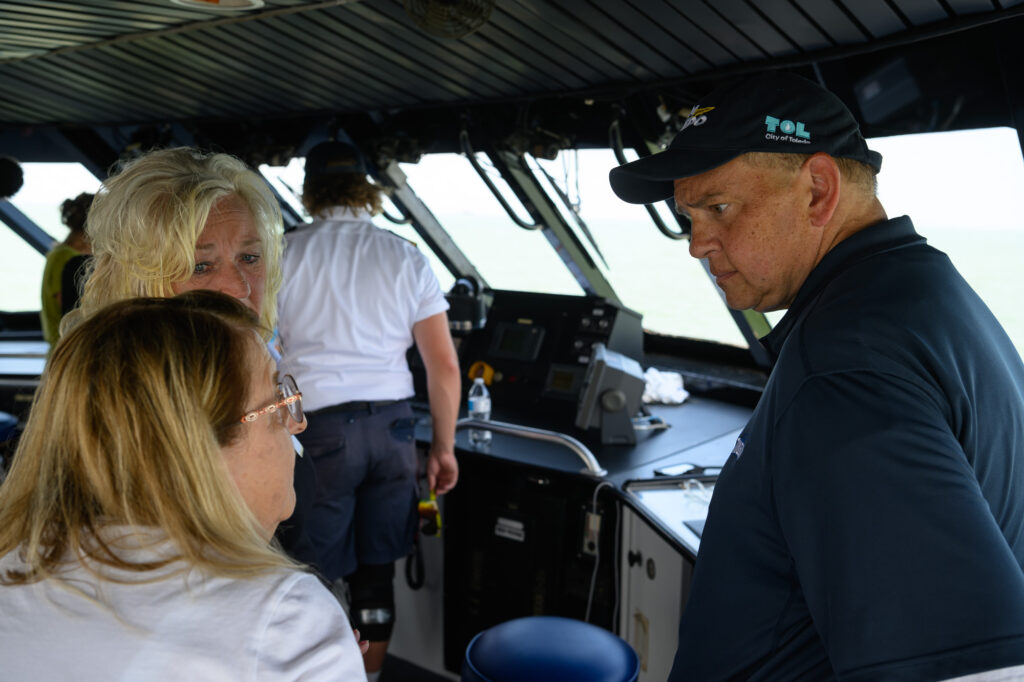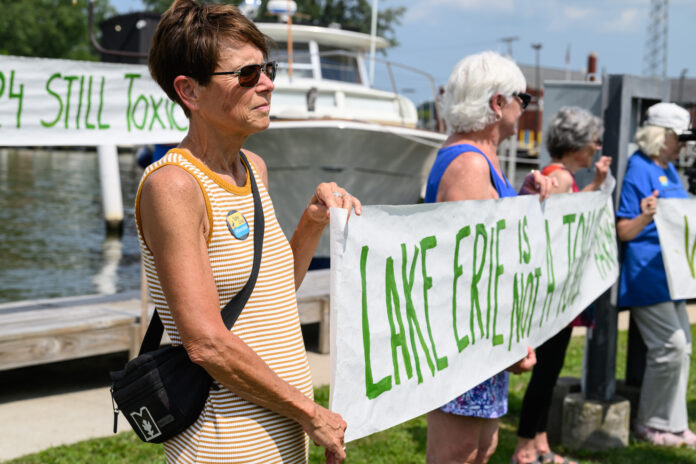10 years after Toledo water crisis, lake water still green
POINT PLACE – “Ten years later, we no longer have a drinking water problem, but we still very much have a lake water problem,” admitted Toledo mayor Wade Kapszukiewicz while aboard the Jet Express at a Lake Erie Waterkeeper (LEW) event on Sunday.
He was on board to mark the 10-year anniversary of the Toledo water crisis. For three days back in 2014, water advisories and shut offs plagued citizens, something many thought would be impossible in such a large municipality.

Sandy Bihn, of the LEW, hosted the event on the ferry service. The organization is a nonprofit that seeks to have fishable, swimmable and drinkable water for the Lake Erie watershed through advocacy, education, litigation and innovation. The trip allowed people to remember the challenges of 2014 and to see the state of the lake a decade later.
“Ten years ago, a boat was taken out from Meinke Marina and out to the intake. The algae was all the way down the water column, all the way down to the bottom and we all witnessed it,” recalled Bihn. “Here we are, 10 years later, and there’s no progress. The lake is still green, and we’re all frustrated.”
Bihn and other speakers, including Lucas County commissioner Lisa Sobecki and Ottawa County Sanitary engineer Kelly Frey, gave remarks that were broadcast to the passengers and any boaters listening on Ch. 68.
Sherry Flemming, a clean water and Lake Erie advocate from Williams County, spoke about a few of the lake’s issues today. Industrialized livestock production, the increase of liquid manure and a lack of regulations were some of the challenges.

“Three years ago, we learned that Williams County was the proposed site for a concentrated aquatic animal production facility; a massive genetically engineered salmon facility that would produce 10,000 metric tons of salmon drawing almost five million gallons of water a day and discharging that much water a day into a tributary of the Maumee River,” said Flemming. “During the permitting process for that facility, the Pokagon Band of Potawatomi submitted comments that should give us pause and make us reflect on our priorities.”
“Traditional teachings passed down for generations by the Pokagon Band and other Mawtheshnowen nations respect water, which is sacred, as an essential element for life. We need to ask ourselves: What is our responsibility to water and the ecosystems that we depend on for life? Should laws prioritize the health of ecosystems, like Lake Erie, that support all life instead of viewing water as just another resource like oil and gas?” she said.
Director of the University of Toledo Lake Erie Center, Dr. Tom Bridgeman, said scientists and water treatment plant managers have made significant progress in dealing with harmful algal blooms. Harmful algal blooms are the rapid growth of algae or cyanobacteria in water that can harm people, animals and the environment.

There are now better ways to predict and track the blooms, but, as Bridgeman said, “we haven’t made a lot of progress in preventing the blooms in the first place. If we can prevent blooms, then we don’t have to worry about all these details.”
As the Jet Express approached the water intake green waves lapped its sides. It’s the same water intake that provides clean drinking water to approximately 500,000 people from Northwest Ohio and Southeast Michigan. At 3:45 p.m., the Jet Express and surrounding boaters honked their horns as a united sound off for Lake Erie.





















